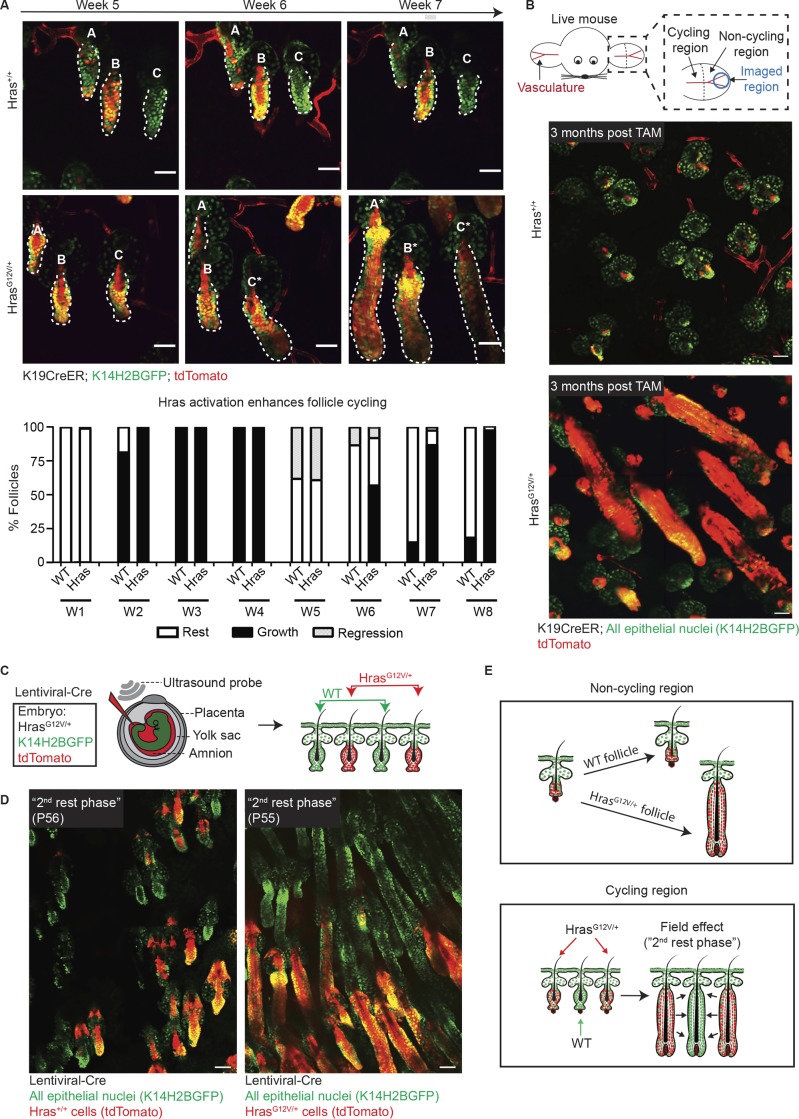Figure 2.
The Hras mutant epithelium nonautonomously impacts the mesenchyme and follicular regeneration. All epithelial nuclei are in green (K14H2BGFP), and recombined cells are in red (tdTomato). (A) Top: Two-photon revisits reveal that K19CreER;HrasG12V/+ follicles reenter the growth phase more rapidly than K19CreER;Hras+/+ controls. Follicles are labeled A–C for ease of recognition, and cycling follicles are labeled with an asterisk. Bottom: Quantification of follicle staging over an 8-wk (W1–W8) period after tamoxifen induction (n = 1,704 follicles across 4 Hras+/+ mice and n = 1,413 follicles across 3 HrasG12V/+ mice). (B) Top: Cartoon schematic depicting the cycling and noncycling regions of the ear skin and imaged region. Bottom: Two-photon images of the hair follicles in the permanently quiescent region of skin at the tip of the ear in Hras+/+ and HrasG12V/+ mice show that while wild-type follicles do not cycle, HrasG12V/+ follicles do (observed in five K19CreER;HrasG12V/+ mice). TAM, tamoxifen. (C) In utero injection cartoon that depicts targeted lentiviral-Cre delivery to the amniotic sack at embryonic day 9.5. Injection with lentiviral-Cre into the HrasG12V/+;K14H2BGFP;tdTomato system directly tags and activates HrasG12V/+ cells in a mosaic fashion. (D) Two-photon images of Hras+/+ (left) and HrasG12V/+ (right) hair follicles during the “second rest phase” (P55). Mosaic activation of Hras using lentiviral-Cre delivery demonstrates that wild-type follicles (green) within the HrasG12V/+ skin reenter the growth phase precociously along with their Hras mutant (red) neighbors while follicles in the Hras+/+ mouse remain appropriately in rest phase (observed in n = 2 LV-Cre HrasG12V/+ mice compared with n = 3 LV-Cre Hras+/+ mice). (E) Cartoon summary depicting the enhanced regenerative power of HrasG12V/+ follicles in both cycling and noncycling skin. All scale bars represent 50 µm.

